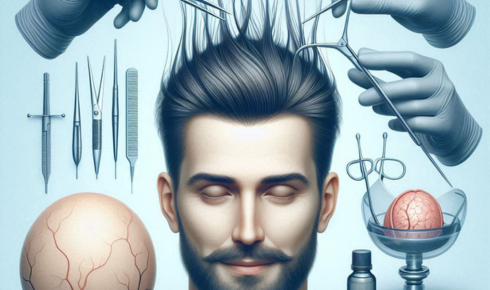
hair transplantation
Hair loss is a common concern affecting millions of people worldwide, regardless of age or gender. For those seeking effective solutions, options like hair transplantation, hair loss treatment, and hair restoration have gained immense popularity. These methods not only help stop hair loss but also restore confidence by providing natural-looking results. In this article, we’ll explore how hair transplants work, why they’re considered a top choice for hair restoration, and what you can expect from these treatments.
Understanding Hair Loss and Its Impact
Hair loss can occur due to various reasons, including genetics, hormonal changes, stress, or medical conditions. For many, thinning hair or baldness can take a toll on self-esteem. While over-the-counter products and home remedies may slow the process, they often fall short of delivering lasting results. This is where advanced solutions like hair transplantation come into play, offering a permanent way to stop hair loss and regain a fuller head of hair.
What is Hair Transplantation?
Hair transplantation is a surgical procedure that involves moving hair follicles from one part of the body (usually the back or sides of the scalp, known as the donor area) to areas experiencing thinning or baldness. The two most common techniques are Follicular Unit Transplantation (FUT) and Follicular Unit Extraction (FUE). FUT involves removing a strip of scalp, while FUE extracts individual follicles, leaving minimal scarring. Both methods are highly effective for hair restoration, with FUE being preferred for its precision and quicker recovery time.
Benefits of Hair Transplants
One of the biggest advantages of hair transplants is their permanence. Unlike temporary hair loss treatments, transplanted hair continues to grow naturally for a lifetime. The results are also incredibly realistic, blending seamlessly with existing hair. Additionally, modern techniques ensure minimal discomfort and downtime, making it a convenient option for those looking to stop hair loss without disrupting their daily lives. With skilled surgeons and advanced technology, patients can achieve a fuller, thicker head of hair that boosts their confidence.
Hair Loss Treatment Options Beyond Transplantation
While hair transplantation is highly effective, it’s not the only way to address hair loss. Non-surgical hair loss treatment options, such as minoxidil and finasteride, are widely used to slow hair thinning and promote regrowth. Platelet-rich plasma (PRP) therapy is another popular method, where a patient’s blood is processed and injected into the scalp to stimulate hair follicles. These treatments can be combined with hair restoration procedures for enhanced results, depending on the severity of hair loss and individual goals.
How to Stop Hair Loss Early
Prevention is always better than cure. To stop hair loss before it progresses, maintain a healthy diet rich in vitamins like biotin and zinc, which support hair growth. Avoid harsh chemical treatments and excessive heat styling that weaken hair strands. If you notice early signs of thinning, consult a dermatologist or hair specialist to explore suitable hair loss treatments tailored to your needs. Early intervention can delay the need for more invasive procedures like hair transplants.
Is Hair Restoration Right for You?
Deciding whether to opt for hair transplantation or other hair restoration methods depends on various factors, including the extent of hair loss, budget, and personal preferences. A consultation with a qualified specialist can help determine the best course of action. Those with advanced baldness may benefit most from hair transplants, while individuals with mild thinning might see success with non-surgical treatments.
Conclusion
Whether you’re considering hair transplantation, exploring ways to stop hair loss, or seeking effective hair loss treatment, there’s a solution out there for everyone. Hair restoration techniques have come a long way, offering hope to those struggling with thinning hair or baldness. By choosing the right approach, you can reclaim your confidence and enjoy a fuller, healthier head of hair. Take the first step today—consult a professional and discover the best path to hair restoration for you!







